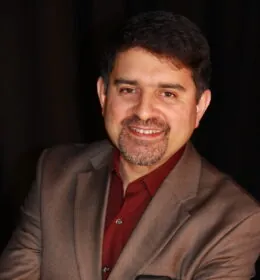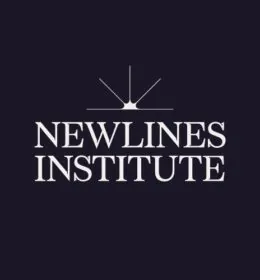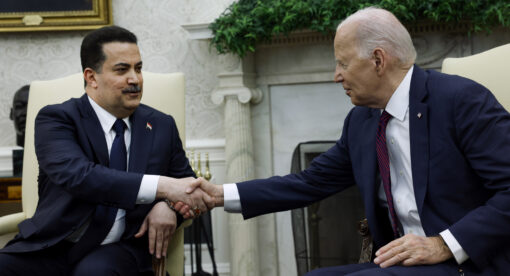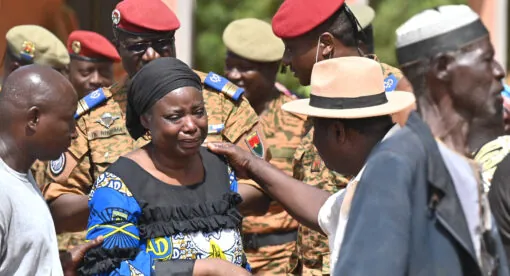In today’s Eurasian Connectivity episode, host Kamran Bokhari sits down with Dr. Ariel Cohen and China expert Wesley A. Hill to discuss their recent report on rare earth minerals in Central Asia and the need for the United States to increase its access to these minerals. The trio discuss China’s massive supply of these minerals, the geography of mineral deposits and their implications, and what the U.S. can do to secure them.
Kamran Bokhari:
Hello, everyone. I’m Kamran Bokhari and I’m back with another episode of the Eurasian Connectivity Podcast produced by the New Lines Institute for Strategy and Policy. Today is February 7th, 2024, when we are recording this. I’m delighted to have as my guests, my friends and my colleagues, Dr. Ariel Cohen and soon-to-be Dr. Wesley Hill, who are authors of this fascinating report, and a very timely one and a bit alarming as I read it, but I’ll get to that here in a bit. But let me introduce my guests. This report is about rare earth elements and Central Asia as a source for those rare earth elements for the United States and its allies and partners, and of course for the growth of the region, which is critical. So Ariel Cohen is an internationally renowned expert on energy policy, Russia, Eurasia, Eastern and Central Europe and the Middle East.
He’s a senior fellow with the International Tax and Investment Center, which by the way is the publisher of this report. He serves as the director of Energy Growth and Security Program. He’s also a non-resident senior fellow at the Atlantic Council, and he has many, many other affiliations that I will encourage you to go into the report and browse through it and you’ll find what all Ariel does. Wesley Hill is also a foreign policy professional, and he’s the lead analyst and the international program manager for the Energy Growth and Security Program at ITIC. He’s an accomplished foreign policy professional and his expertise is on energy policy, security studies, grant strategy, with a specific focus on Chinese geopolitics and Chinese politics as well. So welcome to both of you, Ariel and Wesley. Thank you for doing this.
Wesley A. Hill:
Thank you very much for having us.
Ariel Cohen:
It’s a pleasure, Kamran, and I must say that over the years, we came to appreciate your work and I do believe that you’re one of the top professionals in everything that comes to the Middle East, the Indian subcontinent, including Pakistan and Central Asia. So, it’s always a pleasure talking to you. So we decided to focus on this report, the report on Central Asia’s role as a source of rare earths and strategic minerals because we believe that in the 21st century, one of the megatrends is the transition to renewables and also the fast growth of AI, artificial intelligence, quantum computing, space exploration, and other high-tech industries, including electric cars by the way.
All of that requires massive amounts of strategic minerals. The distinction between strategic mineral and rare earth is that, for example, lithium is a strategic mineral, but it’s not rare. There’s plenty of lithium in high concentrations, whereas rare earth, which is a particular part of metals in the periodic table, the concentration of rare earth in the ores is very low and it takes a lot of work to take them out of the ground and process, refine, and put them into the market.
But without rare earth minerals, we will not have all this high-tech development and energy transition. Then the next question we asked ourselves is who has a dominant position? Like remember in the 20th century, OPEC still does have a major position in oil production, rare earth, and strategic minerals will be what oil was in the 20th century. China is the key player here, both because of the production, but especially because of the refining, mining and refining of the rare earth. This was a deliberate policy of the Chinese Communist Party, and this is why, for example, my colleague Wesley Alexander Hill, who is a China expert, was so important in the production of this report. Then we were looking at Central Asia.
Central Asia is a core competency of our program. The energy growth and security program at the International Tax and Investment Center, and rare earths are widespread in Central Asia, especially in Kazakhstan. So you have this region that is landlocked in the heart of Eurasia. For over 120 years, the leading geopolitical experts were saying he who controls Eastern Europe controls Eurasia. He controls Eurasia controls the world island, and he who controls the world island, meaning the Eurasian landmass, controlled the world. Having this very important aspect of the 21st century industrial development connecting to the geopolitics of Eurasia is, I think, a fascinating subject. This is what this report is about. You can go to itic.net/resources and find this report there.
Kamran Bokhari:
Wesley, give us your thoughts on what brought you to this report and why you got involved in it, and tell us your perspective.
Wesley A. Hill:
Sure, absolutely. So firstly, thank you very much again, Kamran, for having us on. So for me, what really animated my interest in this topic and interest on this report is definitely China’s role. My background is with China, Chinese politics, as you so ably introduced. There was an alarming statistic that really motivated much of the report and informs a lot of the policy surrounding the report’s suggestions, and surrounds all discussion of rare earth elements in academia and in the policy field. That’s China controls between 85 and 95% of rare earth element refining in the world, depending on how you’re counting. If you count China’s allies or unofficial dependencies like Myanmar, Laos, and Cambodia, that number climbs another couple of percent. So, 85 to 98% of this incredibly important fuel for the future that is vital, and like my colleague said, AI, superconductors, supercomputers, all forms of green energy, anything you could possibly think of that will define 21st century technology, rare earth elements are a required input.
It’s also a required input, especially for the United States’ defense industrial complex. 35 tons of rare earth elements go into a single F-35. We don’t know exactly what the distribution of that is, but we do know that we have to import a lot of these rare earth elements already refined or processed to some degree from China. So there is a worry that China is going to use this as leverage against the United States, as Sino-American relations and great power rivalry and great power politics go global and possibly go green.
China already did this to Japan very briefly in 2010 and 2011. China cut off all of its rare earth element exports to Japan, and several weeks after this report was published, China actually cut off the export of rare earth element refining technology to the United States. So not rare earth elements themselves, but China is very interested in defending its monopoly. So the same way that we competed for and were deeply concerned about oil and all sorts of hydrocarbons in the 20th century, it’s going to dominate a lot of the geoeconomic competition in the 21st century and China’s already winning. So, that’s the angle that I came at when we brought this report together.
Kamran Bokhari:
Thank you both for that good introduction. That sort of leads me into my next question. So clearly, the picture you paint in the report and in your opening remarks is that China is already ahead of the curve and it has had a head start of sorts. So where would you guys describe the situation with the United States when it comes to rare earth elements?
Now I know Wesley detailed with stats and data in terms of where the Chinese are, but considering that the United States is a high-tech economy, the United States needs to maintain an edge in technology in general, but specifically for defense purposes, for information technology, for space, and the list goes on and on. Where would you place the United States right now? I guess that’s probably the trigger for this report, so I’ll let you guys address this.
Ariel Cohen:
I think it’s a key question if you look at it from a practical defense and strategic angle, but I believe that we are talking about rare earths for many years now with very limited and modest progress. In fact, when I started this business in the early 80s, that was last century, that was 40 years ago, I participated in a project ran by U.S. intelligence community to focus on Russian Soviet then military technology and the rare earth question was already in play there. One of the explanations why the Soviets were so interested in Southern Africa, South Africa, Angola, Mozambique, Namibia was because Southern Africa has a lot of rare earth, and they wanted to deny sources of these resources to the West.
Roll forward 40 years, the United States is still trying to figure out how we can get rare earth, and here we come against a massive domestic NIMBY movement. NIMBY is “not in my backyard,” NIMBY. Just as the environmentalists are now killing future facilities and production of LNG for export, liquefied natural gas, they don’t want this developed in the United States, we are only developing, I believe, one project in of all places, in California, that will supply rare earth domestically. There is some attempts to supply rare earth from the waste products of coal mining and uranium mining, but it’s not nearly commercial. So, what are we going to do in the United States?
We’re going to talk our friends, be it Canada, which is really next door and really friendly, be it Mexico that is next door, but not always as friendly as Canada, and has internal organized crime issues, be it Europe, like a discovery in Sweden of major rare earth deposits. However, I must tell you that it takes many, many years and billions and billions of dollars to develop every such project. So if, God forbid, we find ourselves in a major conflict with Russia or China, there’s high probability of Russia and especially China using their dominant position in the rare earth mining and refining to shut this supply to the United States and our allies in Western Europe, maybe in Japan, maybe in South Korea and elsewhere.
So as Wes is our resident China expert, I would like with your permission, Kamran, to ask Wes, do I have a base for my worry that China may decide to cut such a supply? Are there any precedents for that, Wes?
Wesley A. Hill:
Well, there are precedents for it. I mean, the most recent full precedent we have is in the rare earth element space itself. It was a full halt on supplies to Japan in 2010 and 2011, right as the new year began over a dispute in the Senkaku or Diaoyu Islands in the southern end of Japan, between Japan and Taiwan. So it’s already happened and China learned from this experience, because it did not go as well as China had hoped. It’s one of the reasons why the embargo against Japan didn’t last very long, but it was a trial run. So China learned what needed to be learned in order to make this more successful, most namely that China has established a rare earth elements strategic reserve in the same way that we have a petroleum strategic reserve. Unfortunately, the United States still does not have that, despite it being many years later.
So China had one test run of this being fully implemented, and very recently there was the… as I already mentioned, the cutoff of refining technologies from China to the United States. So there’s definitely precedent for it and it’s all a bit worrying. I think it’s also worth noting that domestically, the United States has attempted to boost rare earth element production, but for many years it was a lot of pleasantries. It was saying the right things but not doing very much.
So in 2011, after this embargo against Japan, the Obama administration started a rare earth element review. Nothing really came of it. Even 2016, the Trump administration comes around, but for all of his talk about being tough on China, very little changed in terms of rare earth elements. There was some changing in permitting along the edges and that allowed some explorations for rare earth elements in Idaho and Montana and that may eventually go somewhere, but very little change there.
The biggest change that we’ve seen in a rare earth element policy in the United States, and it was spurred as a response to Chinese policy even though it was delayed and very slow, was that when the Biden administration took over, there was a supply review of all rare earth elements. Where do they come from, how do we get them, et cetera, because to some extent, people just didn’t know. There are millions of different contractors, so many different inputs. So, there was this very intricate supply chain review a little too late.
So it caused a lot of problems, but it also resulted in a uptick in individuals being granted more permitting. There are some mines now opening or approaching opening in Idaho and Montana, and there is some refining going on as Ariel mentioned in California. But there’s still a long way to go and the majority of it has been working with foreign partners because the hope is that well, if you work with foreign partners, you will cut out China’s ability to get inputs for their refining dominance, and you can help locals build their supply chain and geoeconomic development, not be as dependent on China, et cetera.
Kamran Bokhari:
So I want to follow up on that question and I want to ask, Wesley and Ariel, please feel free to weigh in, both of you. So you mentioned that in 2010-2011, the Chinese tried to halt supplies, REEs to Japan. I want to ask, what is the likelihood that China could do this with the United States? I’m assuming that this would cut both ways, given the demand on the U.S. side and given where the Chinese economy is really in trouble right now. Even when it was not in trouble, it still is something that I’m assuming they would think many times before using it as a geopolitical weapon, so I’d like to get your thoughts on that.
Ariel Cohen:
First of all, I think China views its foreign policy in pretty much a zero-sum lens because the zero-sum is typical both for realpolitik players and for people who are influenced by Marxism-Leninism, and China is both. Having said that, I think China, or at least some people in China need to understand that being too aggressive may start the cascade of measures and countermeasures like we saw. For example, stealing technology caused the U.S. to start limiting exports of American technology to China, violating intellectual property triggered imposition of certain sanctions, et cetera, et cetera.
So I do believe that market access in the United States is a powerful weapon, and if China starts messing with something as vital as rare earth supply, there will be consequences, as Aunt Lydia said in Handmaiden’s Story, the TV series. But I still think that there’s high chance if our relationship with China deteriorates, if the tension escalate over Taiwan and elsewhere, we may get to a point where there’ll be a serious disruption of a rare earth supply to the United States. That’s why we are advocating in our report more reshoring of rare earth projects, including in Central Asia.
Wesley A. Hill:
I think Ariel has it exactly right, and I think there’s a great quote that sums it up and it’s from the Emperor Augustus, it’s that using his force was like fishing with a golden hook. It was very risky, but it was incredibly potent. So China is confronted with this strategic problem that on one hand, the West is very slowly moving away from China earth elements refining. It is a national security imperative and it is an economic imperative, not just for the United States, but many Western governments that this Chinese dominance in rare earth refining be broken.
So on one hand, there is a small movement away from that. On the other hand, if China were to pull the trigger and use its golden hook, so to speak, that incentive is gone. They can only do this once. China is an unreliable partner. We will bear whatever pain, whatever burden we have to make sure that this never happens again.
So, I think that it’s not as likely that China will use rare earth element embargoes or threat of embargoes unless there is something else that is already in an extremely heightened tension. This is a tool that China could use to advance, say, its advantage in the South China Sea or Taiwan or the Diaoyu Islands or the Senkaku Islands. So China has a very difficult time deciding when to use this if it wants to use this, because the alternative that some people, more reformist people, but they’re not really running either the reins of the Communist Party or the State Council at the moment, is to just use this to economically develop.
If China were to non-coercively use its rare earth element advantage, there wouldn’t be great incentive to break it, and it could make a tremendous amount of money. There are many countries all over the world that are looking at rare earth elements and thinking, “Oh, we can be the Saudi Arabia of neodymium or yttrium or whatever the rare earth element is, China could be extremely wealthy if it had the political courage not to overly politicize, not to coercively use its rare earth element refining. There is so much tension in other areas that involve China that it ultimately boils down to a question of what else is going on vis-a-vis Taiwan or elsewhere, and is the tension bad enough that China is willing to burn this most vital bridge it has, this most vital geo-economic leverage it has to resolve some other issue?
I think right now the answer to that question is no, I don’t think that tensions are so bad with Taiwan the South China Sea that it’s inevitable Beijing will do this, but it’s also not inconceivable that it happens. If tensions were to get really bad or God forbid there was some sort of war in either area, I think that is the situation that would trigger an embargo.
Kamran Bokhari:
I want to get to Central Asia, but before we do that, I want to go back to North America and pick up on your points that both of you made about the capabilities inside the United States and Canada and Mexico. So if we were to combine the capabilities and the resources that we have on the continent, so what are we talking about in terms of comparison with China when it comes to deposits, the mining of those deposits, the metallurgy that goes in, the technology for refinement and it’s then conversion into chips, semiconductors, and other usage in both the civilian tech sector and the defense tech sector. So, give us a 30,000-foot view of where you see the United States currently.
Ariel Cohen:
Wes, you want to take that?
Wesley A. Hill:
Sure. So there is an ongoing geological arms race to find more rare earth elements all over the globe. So we know that the current greatest concentration of rare earth elements is in Xinjiang in Western China, which these rare earth elements also extend west into Central Asia, another reason we were very interested in doing this. But there is also tremendous rare earth element deposits around the continental divide in North America, stretching from Southwestern Canada through the center of the United States into Mexico.
As for exact quantities, we are less sure about this because it is simply continuing. There have been some very big discoveries. So I believe it was Sheep Creek in Idaho, they claim that they discovered the single largest mine or single largest deposit of rare earth elements in an old abandoned mine. But this is just a singular mine, and compared to say the overall density of Xinjiang, it appears to be far behind. But this could change.
There is a tremendous scramble going on right now all over the world, not just in North America and the United States, but also in Europe, in sub-Saharan Africa. Everyone wants to get in on the ground floor of this industry that is undoubtedly only going to grow going into the rest of the century. So, it’s very difficult to make any sort of prediction about supply. But refining, again, I don’t think there’s too much new here, the United States, and to a lesser extent, Mexico and Canada are slowly moving towards getting more refining capacity, going up, getting more rare earth element, domestic supply going up. But it is a very sedate pace.
Kamran Bokhari:
So the focus of your report is REEs in Central Asia and where’s China? Before we talk about what the United States can do, one has to assume that China is not just content with what it has domestically and especially in Xinjiang that you mentioned, but it’s also eyeing and wanting to take advantage of its geographic proximity to the region and the relationships that is already building up with countries like Kazakhstan, Uzbekistan, and others to capture or have access to these resources. So give us a sense of what the Chinese are doing, and then follow up with a question on what the United States is doing and what it ought to be doing. But let’s first talk about what the Chinese are up to.
Ariel Cohen:
The Chinese are the number one trading partner of Kazakhstan, and probably if you take it regionally of Central Asia in general, they’re building roads in Tajikistan. They are the number one oil investor in Kazakhstan, number one gas investor by far in Turkmenistan. They are involved in all kinds of infrastructure projects as a part of their controversial Belt and Road project. First it was called One Belt One Road. Now I think it’s called Belt and Road. But the point is China is taking Central Asia very seriously. It’s building a railroad through Kyrgyzstan and Uzbekistan and Turkmenistan and then crossing the Caspian into Azerbaijan. So both in terms of infrastructure, transportation and energy, this is a big priority for China. Having said that, in rare earth per se, I don’t think there are major projects. There is uranium mining and uranium fuel manufacturing project in Kazakhstan, but it’s only for the Chinese nuclear industry.
We, the United States, were very successful in the 1990s taking the old Soviet deposits or storage of nuclear fuel for reactors and highly enriched uranium, and then taking it out of Kazakhstan, 600 kilograms of highly enriched uranium and then blending it down to produce reactor fuel for the West, for the United States. But we lost the momentum and I, for years, am saying that if you are power like the United States, we cannot just say, “Oh, we’re going to do more with less.” That is demagoguery. If you’re a great power, you need to do more with more.
I just don’t see that there are visits and talks and declarations and C5+1 historic meeting between President Biden and the five heads of state from Central Asia in New York during the September 23 General Assembly. The same group of leaders, the C5+1, five Central Asian presidents/heads of state went to see Chancellor Scholz in Germany. Then Mr. Macron visited Kazakhstan and Uzbekistan, but I would like to see real results and I still don’t see them. Part of it is because the counter-pressure that Russia and China are applying to try to keep the Western interest out of the region, but part of it is our lack of commitment, our bureaucracy, our obsession with secondary issues that are disregarding the real geopolitical competition between the US and the West on the one hand, and Russia, China, Iran, North Korea on the other hand.
Wesley A. Hill:
Yeah. So I was just going to add just a little bit about the current state of Chinese influence in Central Asia in general. So, Ariel has already laid out the basics of everything. The only thing that I would add is that despite being neighbors with China, and inevitably because of the size of the Chinese market, its population, and the relative lack of population in Central Asia, even though together, the five former Soviet Central Asian republics do have a population of 80 million, they’re still dwarfed by China next door.
So, there’s always going to be some economic activity. But Central Asia has not found itself in a position where it is dependent on China, and there is a lot of local … they’re very on guard for excessive Chinese influence or Chinese abuse. So whereas in, for example, sub-Saharan Africa, there was a little bit of a naive honeymoon period for Chinese influence in various sub-Saharan African states before there was a abrupt awakening when the Belt and Road initiative was restructured and all of the loans China was giving out finally came due, Central Asia never really had a comparable process.
They were always very on guard and they were always very keenly aware of what Chinese influence would mean and how excessive Chinese influence could undermine its multivector foreign policy and its overall balancing strategy between the East and the West. So this is also another reason why we were so interested in doing Central Asia, because this is a region that’s right next to China, but it is not in Beijing’s orbit, so to speak.
Kamran Bokhari:
So it sounds like from what I’m listening, there is a significant window of opportunity for the United States to establish that connectivity with the region. You guys have your report, and I will encourage our listeners to read the report in its full details, but for the purposes of this conversation, I’d like to be able to sort of pick your brains on what level of connectivity that the United States and its allies can establish with Central Asia in order to be able to benefit from its rare earth elements, and that not just benefit from its rare earth elements. It’s in the United States’ interest to also build up resilience of these states that are in evolution, and they’re very early on in their journey of political economic development.
So, what is it that the United States can do? It appears from our conversations that there’s a lot that can be done, but please go ahead and unpack even if it is just listing out what Washington isn’t doing and what it can do when it comes to not just this resource, but the region in general.
Ariel Cohen:
Let’s start with some low-hanging fruit. The old Soviet-era Jackson-Vanik Amendment from 1974 that was focusing on freedom of immigration for Soviet Jews, this is still on the books denying PNTR, permanent normal trade relations status for Kazakhstan and Uzbekistan. That is ridiculous. That needs to be waived and lifted and put in the historic archive, number one. Number two, for example, all nuclear powers with the exception of the United States ratified the treaty recognizing Central Asia as a nuclear-free zone. The United States failed to do that.
Now, if you’re looking at the mess in the U.S. Congress, you probably can guess why we are so dysfunctional that we cannot ratify a treaty, which essentially is a no-brainer, recognizing Central Asia together with Russia, China, U.K., and France as a nuclear-free zone. But more importantly and more seriously, I’ll give you an example. We have billions and billions of dollars, tens of billions of dollars committed to economic development in the developing world, in emerging markets through the USAID; the Development Finance Corporation, DFC; and through our dominant role in the World Bank International … what is it … IFC, International Finance Corporation.
We do not finance energy projects unless its renewables. We do not finance mining, although we could, but we don’t because of our environmental sensibilities, and we do not do a good job connecting our economic power in the development space with our strategic interests. So what we need to do is to see what are our strategic priorities, looking at the escalating tensions in the Middle East with Iran, in Europe with Russia, and potentially in the Pacific vis-a-vis China, and start providing solutions to the policies that are necessary in order to strengthen our power, including our industrial power, our economic power, and our allies’ power. For that, we need rare earths and strategic minerals, especially in Central Asia.
Wesley A. Hill:
So as Ariel said, there are a great many things we can do to connect the full might of America’s economic power with the region. But this also doesn’t have to be a monumentally expensive undertaking. The United States could create a rare earth element reserve analogous to the petroleum reserve that would stimulate demand across the world, including in Central Asia, because the reserve would have to be filled. This would stabilize prices, and it would also disincentivize Chinese competition or the use of an embargo.
The United States could also use its vast technical skills at a pretty low cost to have the United States Geological Survey continue its cooperation in the region. They’ve already done some inventorying to make sure the data involving Central Asian rare earth elements is online. There’s not really this Soviet-era mentality that the resources have to be kept secret, because if it’s online, you can attract investment, you’ll get exports to market, etc. So, a lot of American human capital and services and best practices can go a long way in making the region more competitive.
Kamran Bokhari:
Yeah, I mean, look, this is a fascinating topic and we barely scratched the surface, and there’s a lot to talk about here, but we have limited time, as is the case with every podcast. So I want to ask one last question, and very briefly if you guys can just address it. We’ve been talking about the environmental sensitivities and the green energy. What is the intersection here for our listeners when it comes to Central Asia’s rare earth elements and the transition towards renewables and green energy sources? Very quickly, one of you or both of you.
Wesley A. Hill:
So quite simply, there is not going to be a fully green renewable future without a lot of rare earth elements. So if you want to solve all of these massive environmental externalities, global externalities that we all have to deal with, you are going to have to have more mining. We are not going to get the materials for wind turbines or solar panels from a genie.
This will result in environmental problems that have to be solved. Mining requires regulations, but these are solvable problems. They’re not onerous, and it’s much better to have to deal with a finite, very small problem with a mine than a global problem involving CO2 that nobody wants to solve. So there is no green future without rare earth elements, and if we want there to be a green future, not just for the West, the countries that can afford it, but we want a green future in the Global South, we’re just going to need a lot more rare earth elements, and that means we have to mine them everywhere.
Ariel Cohen:
I would like to agree with what my colleague and friend, Wesley Hill said, but also add that you do not have to mine rare earth with the use of child labor. You don’t have to mine rare earth with massive pollution. You have to restore the habitat. After the mines were put in the earth, you can turn them into reservoirs of water. You can turn them into recreational places or storage, or whatever useful that can come out of it.
But also, you need to do the cost-benefit analysis. Without rare earth, we won’t have electric cars, we won’t have satellites and computers. We need to do it until such time as the outer space will be open for economically effective exploration, be it asteroid mining or mining on other planets. This is a long, long time ahead of us.
Kamran Bokhari:
Well, thank you both for coming onto the show. Folks, those were Ariel Cohen and Wesley Hill from the International Tax and Investment Center. We were talking about their paper that was published last month called “Leveraging Central Asia’s Rare Earth Elements for Economic Growth.” You’ve been listening to an episode of Eurasian Connectivity produced by the New Lines Institute for Strategy and Policy. Stay tuned for more on this and other issues that have to deal with human connectivity and the global commons. This is Kamran Bokhari, signing off for now. Take care.







